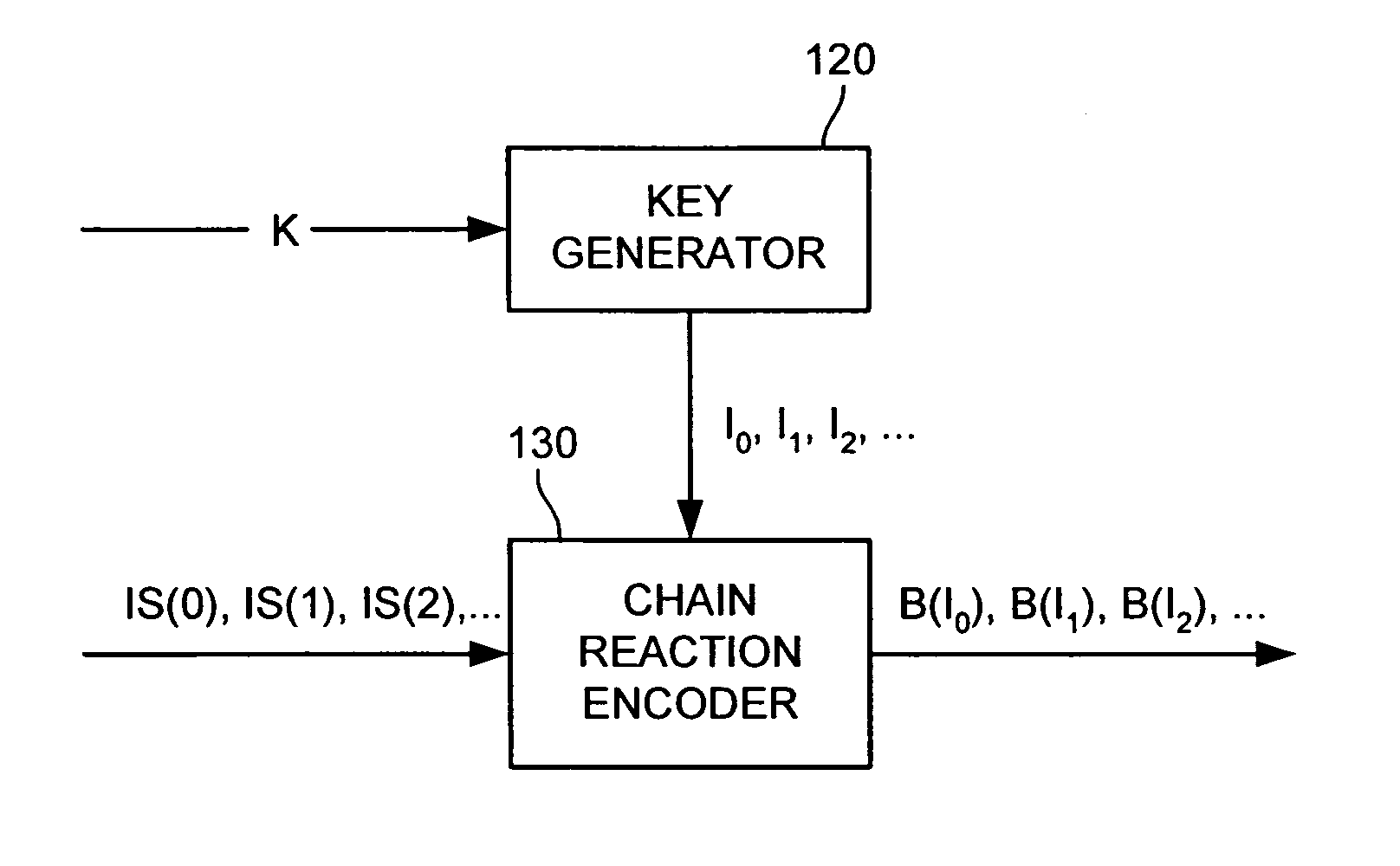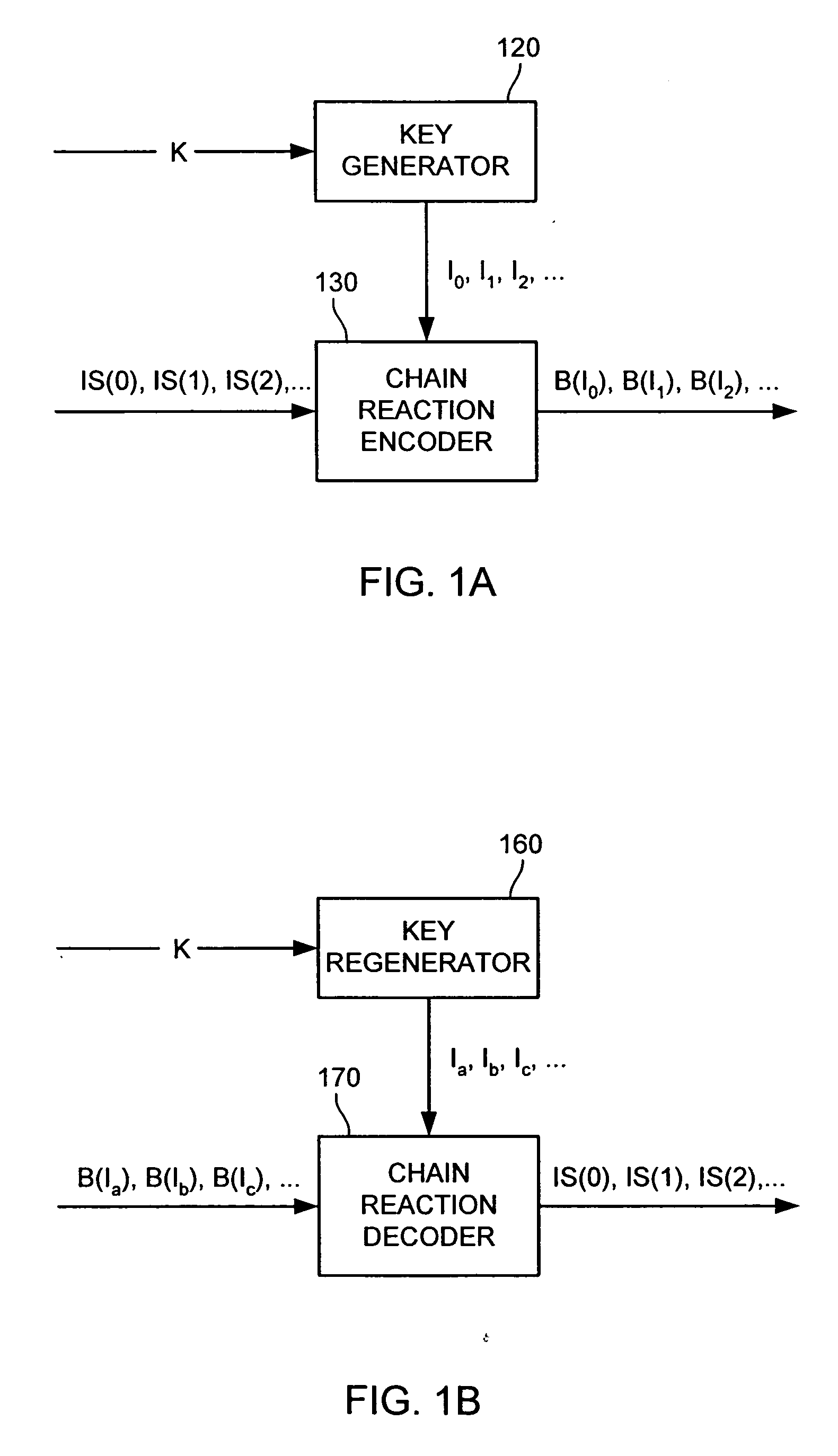Systematic encoding and decoding of chain reaction codes
a chain reaction and code technology, applied in the field of system and method for encoding and decoding data using chain reaction codes, can solve the problems of requiring excessive computing power or memory to operate, requiring excessive computing power or memory, and often affecting the quality of the data, so as to achieve faster communication, less computational expense, and more reliably
- Summary
- Abstract
- Description
- Claims
- Application Information
AI Technical Summary
Benefits of technology
Problems solved by technology
Method used
Image
Examples
Embodiment Construction
I. Non-Systematic Chain Reaction Encoder & Decoder
[0043]FIGS. 1A and 1B depict exemplary embodiments of a non-systematic chain reaction encoder 130 and decoder 170, respectively, as described in Luby I and Raptor. While not referred to as such in Luby I and Raptor, these embodiments are referred to herein as “non-systematic” to differentiate their architecture and operation from the systematic encoders and decoders presented below.
[0044] Referring now to FIG. 1A, the non-systematic encoder 130 accepts as input symbols IS(0), IS(1) . . . , and keys I0, I1, . . . generated by key generator 120. The number of input symbols may or may not be known in advance. In some embodiments, the non-systematic encoder 130 generates for each key I an output symbol. In FIG. 1A the output are denoted B(I0), B(I1), . . . corresponding to the keys I0, I1, . . . . The number of generated output symbols is potentially limitless. Key generator 120 may have access to a random number generator from which it...
PUM
 Login to View More
Login to View More Abstract
Description
Claims
Application Information
 Login to View More
Login to View More - R&D
- Intellectual Property
- Life Sciences
- Materials
- Tech Scout
- Unparalleled Data Quality
- Higher Quality Content
- 60% Fewer Hallucinations
Browse by: Latest US Patents, China's latest patents, Technical Efficacy Thesaurus, Application Domain, Technology Topic, Popular Technical Reports.
© 2025 PatSnap. All rights reserved.Legal|Privacy policy|Modern Slavery Act Transparency Statement|Sitemap|About US| Contact US: help@patsnap.com



